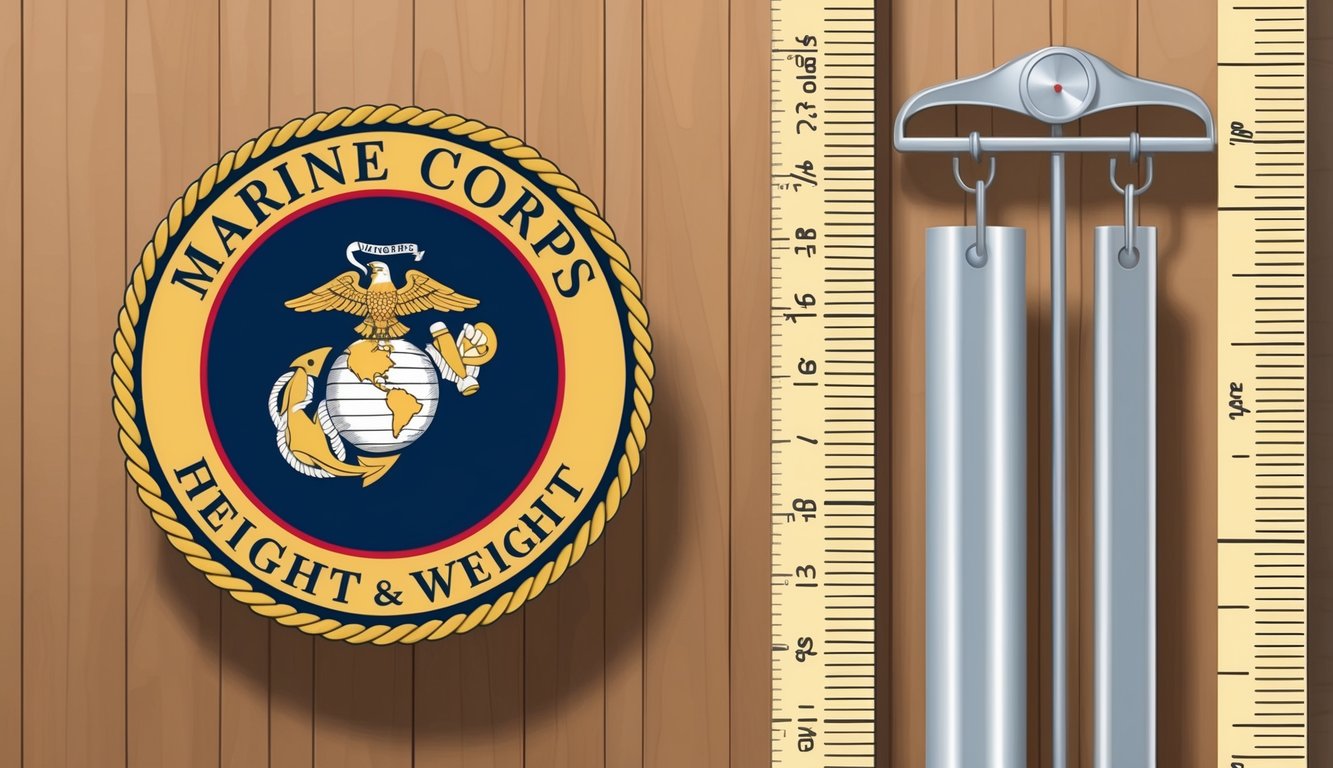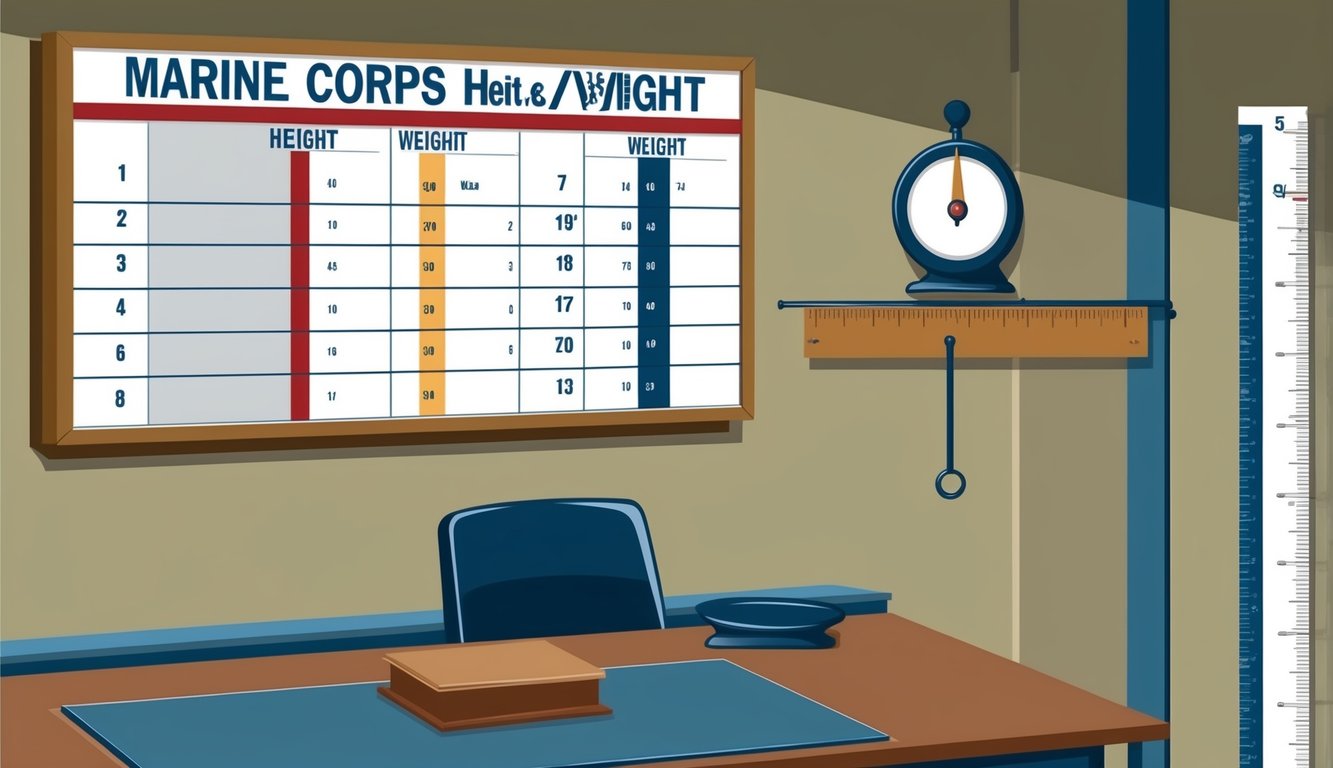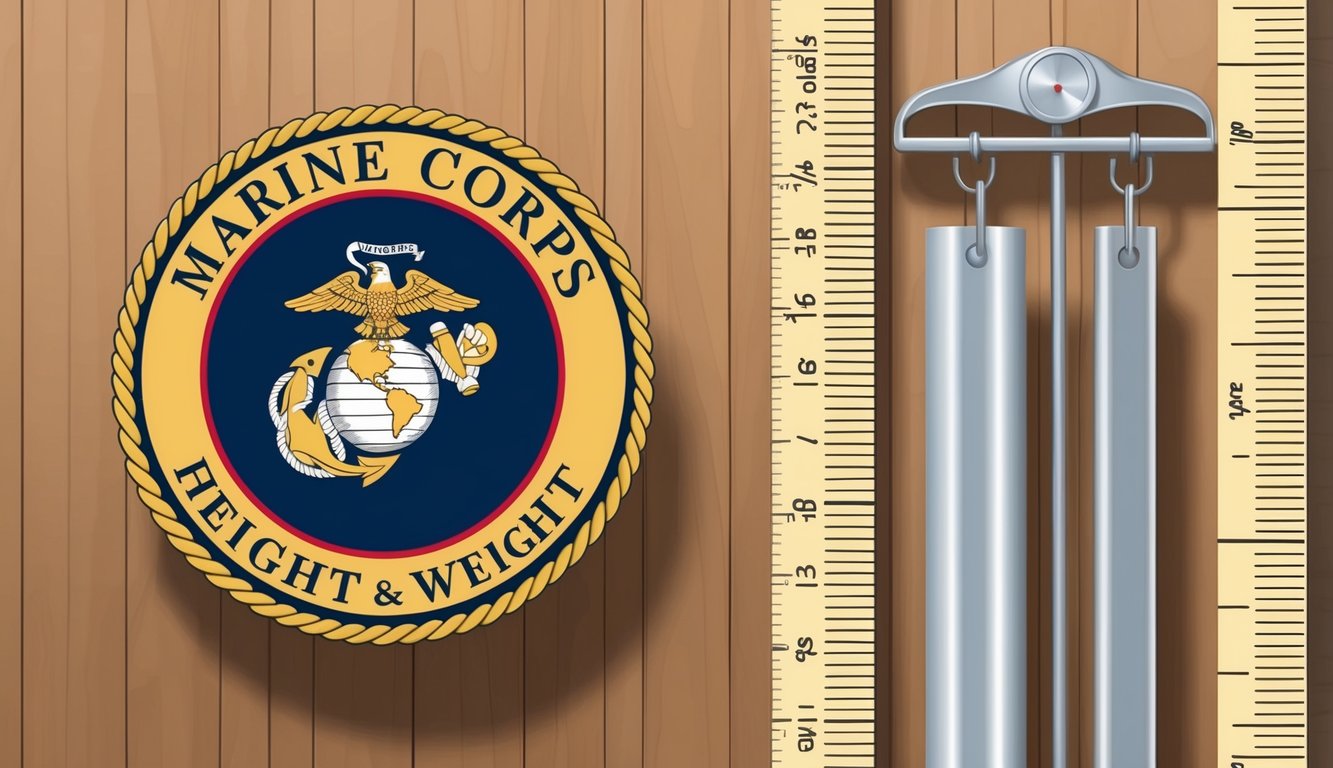“`xml
Comprehending the Height and Weight Standards of the U.S. Marine Corps
The U.S. Marine Corps enforces stringent height and weight standards to guarantee optimal physical fitness and readiness for combat.
Adhering to these standards is vital for sustaining a professional military appearance and ensuring peak performance in various scenarios.
Key Aspects of Height and Weight Requirements
As a Marine, you must comply with specific height and weight criteria that vary by gender and age.
The Marine Corps utilizes a height-weight chart to evaluate if you fall within permissible boundaries.
For instance, a male Marine standing at 5’10” within the 17-20 age bracket should have a weight between 132 to 192 pounds.
Exceeding the maximum weight limit prompts a body fat assessment.
The Marines allow slightly elevated body fat percentages for older age categories.
Male Marines aged 17-26 can have a body fat percentage of up to 18%, while those 46 and above are permitted up to 22%.
Insights into Body Composition Standards
The Body Composition and Military Appearance Program of the Marine Corps outlines standards for maintaining a physically fit body.
Evaluations will be based on your overall appearance, including posture and how well your uniform fits.
Body fat measurements are taken using the circumference method, involving neck and waist measurements for males, while females have their neck, waist, and hip circumferences measured.
If you exceed established body fat limits, you will enter the Body Composition Program.
This initiative offers nutrition education and physical training to assist you in meeting the standards.
There are specific timelines for demonstrating improvement, or you may face potential administrative consequences.
Eligibility Criteria and Evaluation Procedures

The Marine Corps has distinct guidelines for assessing both potential recruits and active duty Marines.
These protocols ensure that individuals fulfill the physical and mental standards necessary for service.
Age and Health Factors
To enlist in the Marine Corps, you must be between 17 and 28 years old.
Your overall health is paramount, and passing a medical examination is mandatory.
This medical check will assess your vision, hearing, and general well-being.
The Corps also evaluates mental health, screening for conditions that may hinder your ability to serve effectively.
Weight standards require you to meet specific thresholds based on height and gender.
If you fall outside these limits, adjustments may be necessary before enlisting.
Moreover, the Corps screens for pre-existing injuries or chronic conditions that could potentially affect your performance.
Assessing Fitness of Marine Corps Recruits
Your fitness level will undergo evaluation through the Initial Strength Test (IST) at the Marine Corps Recruit Depot.
This assessment includes:
- Pull-ups or push-ups
- Crunches or plank hold
- 1.5-mile run
Minimum standards differ by gender.
Here’s a summary:
| Exercise | Male Minimum | Female Minimum |
|---|---|---|
| Pull-ups | 3 | 1 |
| Push-ups | 20 | 15 |
| Crunches | 44 | 44 |
| Plank | 1:20 | 1:20 |
| 1.5-mile run | 13:30 | 15:00 |
Meeting these standards is essential to commence recruit training.
Throughout your service, you will take the Physical Fitness Test (PFT) annually to ensure you maintain your fitness level.
Ensuring Compliance and Addressing Non-Elisibility

The Marine Corps actively supports you in meeting and sustaining height and weight standards.
Resources are available to address underlying issues and to guide those facing challenges in compliance.
Tackling Unhealthy Habits and Providing Mental Support
If you struggle to meet standards, your command may direct you to nutritional counseling or fitness initiatives.
These services can help identify unhealthy eating habits or lifestyle choices affecting your body composition.
Mental health support is readily available as well.
Stress, anxiety, or depression can lead to weight variations, and seeking assistance from a counselor or psychologist is encouraged.
The Body Composition and Military Appearance Program (BCMAP) provides individualized plans to assist you in getting back on track.
This may incorporate meal planning, exercise regimens, and regular check-ins with a designated mentor.
Consequences of Failing to Meet Standards
Not meeting height and weight requirements can affect your career advancement.
Ineligibility for promotions, special duty assignments, or schooling may result from such failures.
Repeated non-compliance could lead to administrative measures, including separation from the Marine Corps.
Typically, you will be allotted a specific timeframe to demonstrate improvement prior to any actions being initiated.
Morning weigh-ins are frequently utilized to monitor progress.
Ongoing failures during these assessments may result in increased monitoring or placement on the BCMAP.
Common Questions and Answers
The Marine Corps has specific requirements and policies regarding height, weight, and body composition.
These regulations apply to both enlisted personnel and officers, with some distinctions.
How is body fat calculated for the USMC?
The Marine Corps employs a tape test method to determine body fat percentage.
For males, neck and waist circumferences are measured, and for females, neck, waist, and hip circumferences are recorded.
These measurements are then used in a formula to calculate body fat percentage.
What are the height and weight allowances for joining the USMC in 2024?
In 2024, the minimum height for male Marines is 58 inches, while the maximum height is 80 inches.
For females, the height range is from 58 to 72 inches.
Weight allowances change according to height and age.
Meeting these standards is crucial for enlistment eligibility.
What chart is utilized for measuring height and weight in the USMC?
The Marine Corps uses specific height and weight charts that are periodically updated.
These charts specify the maximum allowable weight for each height, taking age and gender into account.
The latest version can be found in Marine Corps Order 6110.3A.
What are the maximum weight limits for females in the Marine Corps?
Maximum weight limits for female Marines depend on height and age.
For instance, a 64-inch tall female between the ages of 17 and 20 has a weight cap of 160 pounds.
These limits adjust slightly with age and height.
What is the Marine Corps’ policy regarding height and weight standards for enlistment?
The Marine Corps mandates that all recruits adhere to height and weight standards prior to enlistment.
You must be within the acceptable range for your height and gender.
If you exceed the weight limit, you may still qualify if your body fat percentage remains within satisfactory limits.
Are the height and weight requirements different for Marine Corps officers?
Height and weight standards are generally identical for both enlisted Marines and officers.
However, officer candidates may be subject to stricter evaluation during the selection process.
You are expected to uphold these standards throughout your career as an officer.
“`

